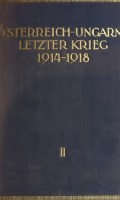 Jutland: The Naval Staff Appreciation by William Schleihauf
Jutland: The Naval Staff Appreciation by William Schleihauf ISBN: 9781848323193
Published by Seaforth Publishing on December 31, 2016
Genres: History, Military, World War I, Naval, General
Pages: 352
I include this title with some reluctance, as I contributed some of the text and prepared the book for publication after the death of my friend, Bill Schleihauf. Nevertheless, I think it rates as an important work on the battle. The core of this book is a secret appreciation of the battle, written after the war by a pair of Royal Navy officers and suppressed because of its extreme criticism of Admiral Jellicoe. Despite its suppression, it has been used by a number subsequent historians (including Arthur J. Marder) and so has played an important part in the historiography of the battle. The notes added by Schleihauf and McLaughlin supplement the original text and point out its errors, and a collection of valuable documents is appended.
FULL DISCLOSURE: As noted above, I added some text and prepared the manuscript for publication, so I am not an unbiased reviewer!
(Notes by Steve McLaughlin)



 The Battle of Jutland by
The Battle of Jutland by  Churchill and the Dardanelles by
Churchill and the Dardanelles by  The Naval Route to the Abyss by
The Naval Route to the Abyss by  American Military Vehicles of World War I by
American Military Vehicles of World War I by  The Vanquished by
The Vanquished by  NATIONAL FLOWERS: The Battle of Verdun 1916 by
NATIONAL FLOWERS: The Battle of Verdun 1916 by  Soldiers’ Songs and Slang of the Great War by
Soldiers’ Songs and Slang of the Great War by  The First World War by
The First World War by  Cataclysm: The First World War as Political Tragedy by
Cataclysm: The First World War as Political Tragedy by  The Great War in History: Debates and Controversies, 1914 to the Present by
The Great War in History: Debates and Controversies, 1914 to the Present by  The Encyclopedia of World War I : A Political, Social, and Military History by
The Encyclopedia of World War I : A Political, Social, and Military History by  The Great War: Myth and Memory by
The Great War: Myth and Memory by  Fighting the Great War: A Global History by
Fighting the Great War: A Global History by  Decisions for War, 1914-1917 by
Decisions for War, 1914-1917 by  The World War I Reader by
The World War I Reader by  Aftermath: Legacies and Memories of War in Europe, 1918-1945-1989 by
Aftermath: Legacies and Memories of War in Europe, 1918-1945-1989 by  The Oxford Illustrated History of the First World War: New Edition by
The Oxford Illustrated History of the First World War: New Edition by  First World War Remembered: In Association with Imperial War Museums by
First World War Remembered: In Association with Imperial War Museums by  Austria-Hungary’s Last War, 1914-1918 in English by
Austria-Hungary’s Last War, 1914-1918 in English by  Hidden Stories of the First World War by
Hidden Stories of the First World War by  The Radetzky March by
The Radetzky March by  Birds Without Wings by
Birds Without Wings by  Life Class by
Life Class by  The Secret Battle: A Tragedy of the First World War by
The Secret Battle: A Tragedy of the First World War by  A Bitter Truth: A Bess Crawford Mystery by
A Bitter Truth: A Bess Crawford Mystery by  A Lonely Death: An Inspector Ian Rutledge Mystery by
A Lonely Death: An Inspector Ian Rutledge Mystery by  Coming Home by
Coming Home by  An Unmarked Grave by
An Unmarked Grave by  Across the Blood-Red Skies by
Across the Blood-Red Skies by  Army Service Corps, 1902-1918 by
Army Service Corps, 1902-1918 by  Flawed Victory: Jutland, 1916 by
Flawed Victory: Jutland, 1916 by  Soldier and Warrior: French Attitudes toward the Army and War on the Eve of the First World War by
Soldier and Warrior: French Attitudes toward the Army and War on the Eve of the First World War by  The United States, Revolutionary Russia, and the Rise of Czechoslovakia by
The United States, Revolutionary Russia, and the Rise of Czechoslovakia by  Leadership in the Trenches: Officer-Man Relations, Morale and Discipline in the British Army in the Era of the First World War by
Leadership in the Trenches: Officer-Man Relations, Morale and Discipline in the British Army in the Era of the First World War by  Isonzo: The Forgotten Sacrifice of the Great War by
Isonzo: The Forgotten Sacrifice of the Great War by  Your Country Needs You — From Six to Sixty-Five Divisions by
Your Country Needs You — From Six to Sixty-Five Divisions by  Escape from Villingen, 1918 by
Escape from Villingen, 1918 by  War Land on the Eastern Front by
War Land on the Eastern Front by  The Central Powers in the Adriatic, 1914-1918: War in a Narrow Sea by
The Central Powers in the Adriatic, 1914-1918: War in a Narrow Sea by 
